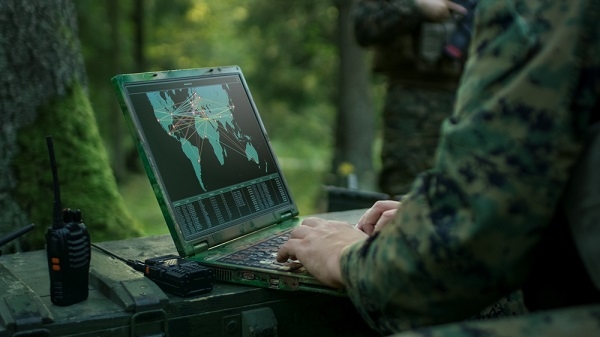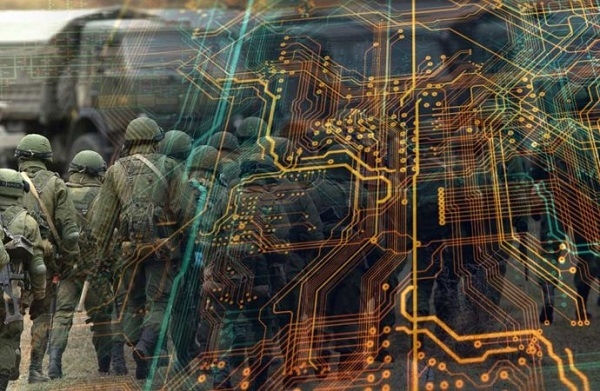Need for Effective Cyberwar System as part of Hybrid Warfare
19 Jun 2020 11:04:00
Understanding Hybrid Warfare and Cyberspace Threat Perspective
Understanding the nuances of “hybrid Warfare” is an imperative to determine the role of cyberspace threat perspective. Hybrid warfare encompasses “the full spectrum of conflict including complex operations during peacetime and war.” It is the synchronized use of multiple instruments of power simultaneously and intentionally exploits creativity, ambiguity, non-linearity and the cognitive elements of warfare tailored to specific vulnerabilities across the full spectrum of societal functions to achieve synergistic effects. It is also typically tailored to remain below obvious detection and response thresholds, and often rely on the speed, volume and ubiquity of digital technology that characterizes the present information age. In sum, it is a blend of conventional warfare, irregular warfare and cyber warfare with other influencing methods, such as fake news, diplomacy, lawfare and foreign electoral intervention.
In “Hybrid Warfare”, Cyberspace has become the central domain for conflict escalation against adversaries – low cost option. Unlike nuclear weapons avoided to wage wars, cyber “weapons" are used daily in ways that do not pose existential threats. Today, cyberspace domain is in dynamic progression. Also, achieving military superiority in the air, land, sea, and space domains in no small part depends on superiority in cyberspace. Cyberspace operations employ simultaneously a number of tools to include: Disinformation and Misinformation Operations; Proxy wars; and, Political and Economic Coercion. Adversaries suffer little reputational or accountability blowback while doing so. Cyberwar is a relatively low-cost, low-risk domain for coercion and “virtual force multiplier”. Russia, China and even North Korea have been in the forefront of conducting offensive cyber wars. What more, Pakistan has been in the forefront of conducting “Proxy War” since mid-1980s that has been transformed into “Hybrid War” by late 1990s. The USA has only joined the race with the commissioning of Cyber Command in 2009.

In particular, Chinese use cyber and influence operations, proxies, and the positioning of military forces to obtain an advantage while managing the risk of conflict not only with India but also with the United States. The expansion into the South China Sea is a good example of this approach. If the intent was initially to push back against the United States, they now see an opportunity to gain regional dominance and reshape global rules and institutions in ways that favor Chinese interests. India, yet a ‘Fragile State’, unable to effectively counter internal security conundrum offers an opportunity to adversaries to wage offensive cyberspace operations contra national security interests. China’s avowed and affirmed doctrine is “Creeping Incrementalism and Extended Coercion” on the borders along the Indo-Tibet border to keep alive their claims to disputed areas until they acquire dominant status. So, Chinese coercive actions (force or threat to use forces - strategy of demonstration) combined with cognitive manipulation are designed to advance their national interests while staying below the threshold of equilibrium thereby making low-level conflict more effective and attractive.
Not left far behind is Pakistan with its avowed end objective of seeking revenge through 1000-year jihad for its defeat in 1971 war and reclaim J & K. China and Pakistan are increasing their own power and influence by leveraging fissures and gaps not only in India, but also in the SAARC nations they seek to influence by deploying tools and techniques. Both China and Pakistan have been exploiting the velocity and volume of data in cyberspace to their advantage. In our country, there is no dearth of “Proxies, Leftist Liberal Forces, partisan media houses, criminals, disgruntled groups and individuals available for exploitation by adversaries. Political instability and existing vicious factional politics of our nation provide opportunities for China and Pakistan to operate with near impunity and pose significant challenges. Shaheen Bagh protests and Delhi riots are good example. In sum, unity and harmony of social fabric stands disrupted and divided on irreconcilable path on the internal front with adverse fallout in politics and economy.
Furthermore, on the external regional front, they have been successful in driving a wedge in friendly relations with neighbors like Nepal, Bangladesh, Myanmar and Sri Lanka as cooperative and collaborative partners to maintain peace and stability in South Asia. So, India is facing the fury and the brunt of increasingly multi dimensional conflict crisis situations from both adversaries who are hell bent upon disrupting and destroying political, social and economic fabric by various means particularly in the cyber war sphere. It is, therefore, imperative to learn to stop attacks on two fronts: both defensive and, most importantly offensive through offensive cyber warfare to break adversary’s social unity and economy.
Geopolitics – International Environment
Today, the international environment - global ecosystem – is viciously churning in a state of extraordinary dynamic flux, and many actors/players around the globe are participants in the game of geopolitics. The ongoing geopolitical, economic, and normative shifts in the international system contribute to greater pervasiveness of hybrid warfare activity. With U.S. hegemonic power diminishing, the international system is becoming increasingly multi polar, with China emerging as rival to the United States, while other states like Turkey, Iran and North Korea are vying for more regional influence. In such a highly complex environment, nations must prepare a flexible coherent strategy to manage crises in all fields – internal and external.

“Change is inevitable” is all domains. Nations who do not change with happening around them are bound to collapse. Paul Kennedy, an eminent historian, made an interesting point on why empires fail—it is not that they do not recognize problems it is that they continue to apply old solutions that worked well in the past to new problems where they are no longer effective.
Grand Strategy Vacuum
India has been facing the challenge of “Proxy Wars” since mid 1950s in the Northeast when China actively aided and assisted Naga Insurgency; and, from mid 1980s in the West from Pakistan which has been transformed today into “Hybrid Warfare”. Yet, the “Blind men of Hindustan” – political decisions makers and their support bureaucratic mechanisms - have failed dismally to produce a single “National Strategy Document” defining “Grand Strategies´ in the last 72 years in all fields – not only defining end objectives but also specifying ways and means to achieve them. Even after over 20 years, the NSA since inception – 19 November 1998 - has dismally failed to produce even a draft. It mercilessly exposes intellectual bankruptcy at the Apex levels.
However, political parties have been publishing volumes of “Pre-Poll Manifesto’s promising the Moon, unachieved like poverty alleviation, to the Gullible People”. Also, experts have published heaps of wish-lists as reforms for successive regimes in the hope to, somehow, assist formulation of strategies for various scenarios in all fields like, for example, Administrative Reforms, Police Reforms and so on. And, majority of them are collecting cobwebs in the dustbins of North and South Blocks of Lutyens New Delhi and State capitals. Such is the dismal state of affairs today. In such an intellectually bankrupt scenario or paralysis, how can India counter cyber security threats from adversaries as part of “Hybrid Warfare”, but also carryout offensive Cyber operations against them in a deliberate and planned manner?
Need for Dynamic Shifts in Grand Strategy Policies for Armies
Realize all alike that “Grand strategy” concerns the decisions or choices in pursuit of long term end objectives from available alternatives or options in all fields of national endeavor; but not merely armies anymore. Colin Gray, eminent strategy theorist, stated over a decade ago that “Categories of warfare are getting blurred and they do not fit into tidy boxes,” like conventional, nuclear, limited, situations short of war or insurgencies or terrorism. In the bygone days of World Wars, the end objective of “Grand Strategy” for the armies was to “Win Wars, more aptly, battles with people largely left out of battles”. When nuclear weapons entered as weapons of mass destruction, the chief purpose of wars became to avert wars: “Deter or Dissuade” outbreak of wars between nuclear armed adversaries. The basic assumption of nuclear strategists was that nuclear weapons would never be used; but they would deter. However, they did not prevent conflict and confrontations by other ways and means. If any, the conflicts between adversaries have been increasing albeit in new forms.
Now, “Deterrence is dead.” Automatically, the rules governing the games of strategy have altered dramatically. Now, there are no well defined boundaries like war and peace. And, the cyberspace has emerged into the center stage. In reality, cyber "weapons" are used daily. It requires a deliberate and persistent engagement of target nations. What does it imply? The game of strategy and the rules have changed dramatically at a rapid pace. Gone are the days of “winning battles” per se by merely opting for modernization of security forces and superiority in quality and quantity of force levels. Now, the strategic security debates must reorient towards waging wars in cyberspace. Otherwise, adversaries will gain cyberspace superiority.
With the dynamic transformations in the rules of the game of strategy, even national interests needs to be dynamically refined from time to time to counter adversaries cyber wars. Even building the mechanisms for direct diplomatic engagement on security issue with strategic opponents, and developing and funding non-military strategies must be progressed with alacrity. Adversaries must realize that the costs of threatening India’s national security interests through coercive actions will be equally matched in their backyards at a great cost to them.
Current Status of Cyberwar System
What is the current status of Cyberwar system in India? Are our structures and operations fine tuned to counter the magnitude of the threat, removing constraints on our speed and agility, and maneuvering to counter adversaries and enhance our capabilities with secure networks, platforms, and data? If the nation wants to gain parity or edge in Cyberspace domain, the system must be structured to comprehensive alignment of operations, capabilities, and processes, and the seamless integration of intelligence with operations.

The Defense Cyber Agency, a tri-service command of the Indian Armed Forces, responsible for handling cyber security threats, was established in September in 2018 and commissioned one year later in November 2019 – laggard as usual. And, there are also a plethora of agencies under the Ministry of Electronics and Information Technology, the Ministry of Home Affairs, the National Security Council Secretariat (NSC), and the National Technical Research Organization (NTRO), and several other departments and agencies have their own cyber units that look at various aspect of cyber security concerning their specific areas. As usual, it is reflection of “Empire Building” obsession and phenomenal intra departmental controversies.
Next, what about manpower staffing under the Central Agency? Sans qualified experts at conceptual, directional and functional levels staffing the structures, the system cannot deliver. Ipso facto, a traditional four-year college in cyber security, two years is required to earn an associate’s degree, four years for a bachelor’s degree, and additional two years for a master’s degree. “Blind men of Hindustan must wake up from their phenomenal “Kumbakarna slumber” to specify policies, create unified structure, staffing, doctrines, and processes to keep pace with the speed of events in cyberspace and use them offensively to maintain decisive advantage. After all, superior strategic effects depend on the alignment of operations, capabilities, and processes, and the seamless integration of intelligence with operations.
What is important is to accept and admit that there are gaping voids about India’s “Grand Strategy” both in the offensive and defensive domains as deterrence means in cyberspace. Yet another irrefutable fact is that a cyber strategy centered on defense purely is inadequate to deter adversaries. In sum, the challenges faced by India in cyberwar front covers all domains. Policy and legal frameworks have not kept pace with the evolving threats. There is no effective system in place. On the external front, security partnerships/alliance need to be forged at regional and international level best suited to hybrid warfare environments. Expediency in fielding an “Effective System” is the dire need.
